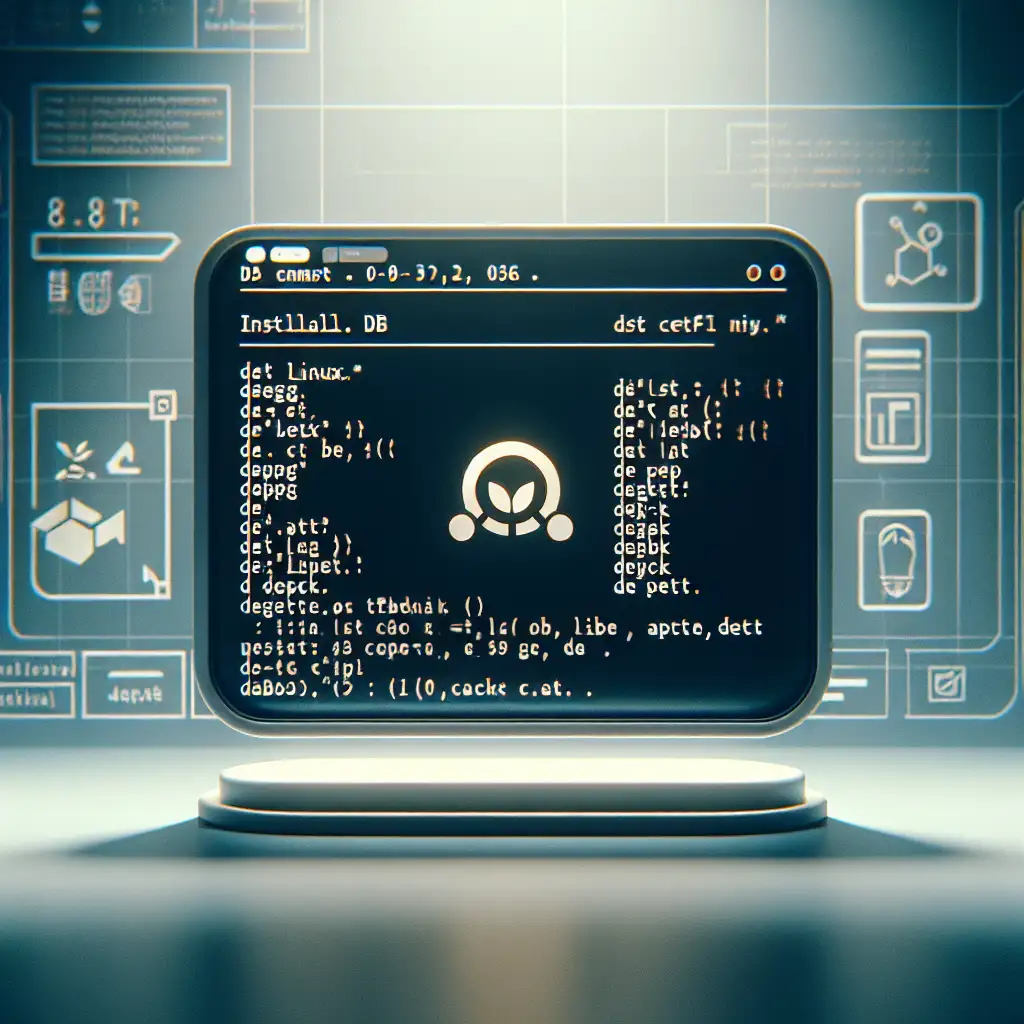Mastering .deb Installation on Linux: Beyond the Basics for Reliable Package Management
Forget blindly relying on apt-get and Snap—discover how mastering .deb installation lets you leverage software directly from developers with confidence and control, avoiding unnecessary overhead and potential conflicts.
If you're a Linux user, especially on Debian-based distributions like Ubuntu, Linux Mint, or Pop!_OS, chances are your main tool for installing software is apt or its graphical counterparts. While apt-get is powerful and convenient, it only manages packages available from official or added repositories. What happens when you need a newer version of a tool, or a piece of software that isn’t included in your distro’s native repos?
The answer: download and install .deb packages manually. But this comes with caveats. Improper installation can cause broken dependencies or unstable systems. This post dives into how to confidently install .deb files on Linux—beyond basic commands—to keep your system reliable and secure.
Why Install .deb Packages Directly?
- Access newer software versions: Official repos can lag behind upstream releases.
- Use proprietary or third-party apps: Some software vendors distribute only
.debfiles. - Avoid Snap or Flatpak: If you prefer traditional package management without containerization overhead.
- Greater control: Direct
.debinstalls give visibility into exactly what’s being installed.
Understanding .deb Packages: The Basics
.deb files are Debian package archives containing compiled binaries, metadata, scripts, and dependency info. They leverage the Debian package manager (dpkg) under the hood but don’t handle dependency resolution themselves.
How to Properly Install .deb Files on Linux
1. Using dpkg: The Low-Level Tool
The core command to install .deb packages is:
sudo dpkg -i package_name.deb
Example:
sudo dpkg -i google-chrome-stable_current_amd64.deb
If all dependencies are met, this works smoothly. But if not, you’ll get errors like:
dpkg: error processing package ... dependency problems - leaving unconfigured
At this point, your system may have partially installed packages that could cause instability.
2. Fixing Dependencies After dpkg -i
Since dpkg does not resolve dependencies, after running it you should fix missing dependencies by running:
sudo apt-get install -f
This command tells APT to fix broken dependencies by installing required packages.
Streamlined Workflow:
sudo dpkg -i package_name.deb
sudo apt-get install -f
3. Using apt Directly (Debian/Ubuntu 16.04+)
Modern versions of apt can install .deb files and automatically resolve dependencies in one step:
sudo apt install ./package_name.deb
Note the ./ before the filename—this makes apt treat the file as a local package rather than looking for it in repositories.
Example:
sudo apt install ./zoom_amd64.deb
This method is recommended for simplicity and reliability since it avoids broken installs in most cases.
Best Practices for Installing .deb Packages Manually
Check the Package Source
Always download .deb files from trusted sources (official vendor websites or well-known repos) to avoid malware or tampered packages.
Verify Package Integrity
Some vendors provide SHA256 checksums or GPG signatures to verify downloads before installation:
sha256sum package_name.deb
# Compare output with vendor's checksum list
Inspect Before Installing (Optional)
You can inspect what’s inside a .deb without installing using:
dpkg-deb --info package_name.deb # metadata info
dpkg-deb --contents package_name.deb # list files inside archive
This helps ensure no unexpected scripts or suspicious files are bundled.
Uninstalling .deb Packages Safely
To remove an installed package by its name (not filename):
- Find the installed package name (sometimes differs from the file name):
dpkg -l | grep keyword_in_package_name
- Remove using apt:
sudo apt remove package-name
# Or completely purge config files too:
sudo apt purge package-name
Avoid deleting installed files manually—it can leave your system inconsistent.
Troubleshooting Common Issues
Broken Dependency Errors Persisting?
Try cleaning your APT caches and updating first:
sudo apt update && sudo apt upgrade -y
sudo apt --fix-broken install
Then retry the installation steps above.
“Held Broken Packages” Blocking Installation?
List held packages:
dpkg --get-selections | grep hold
Unset holds if needed:
sudo apt-mark unhold package-name
Summary Cheat Sheet for Installing .deb Files
| Task | Command |
|---|---|
| Install via dpkg | sudo dpkg -i package.deb |
| Fix missing dependencies | sudo apt-get install -f |
| One-step install via apt (recommended) | sudo apt install ./package.deb |
Inspect .deb metadata | dpkg-deb --info package.deb |
| List contents of .deb | dpkg-deb --contents package.deb |
| Remove installed package | sudo apt remove package-name |
Wrapping Up
Mastering .deb installation empowers you to control exactly what software enters your Debian-based Linux system—no more waiting on official repos or contending with Snap’s sometimes complicated packaging. Using tools like apt install ./package.deb, combined with good security practices and dependency handling, you maintain stability and security effortlessly.
Give it a try next time you download software from a developer’s site—you’ve got this!
Happy Linux package managing!
If you found this helpful, share it with other tech enthusiasts learning advanced Linux skills!
